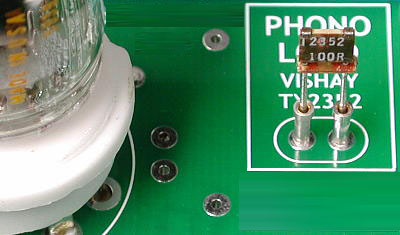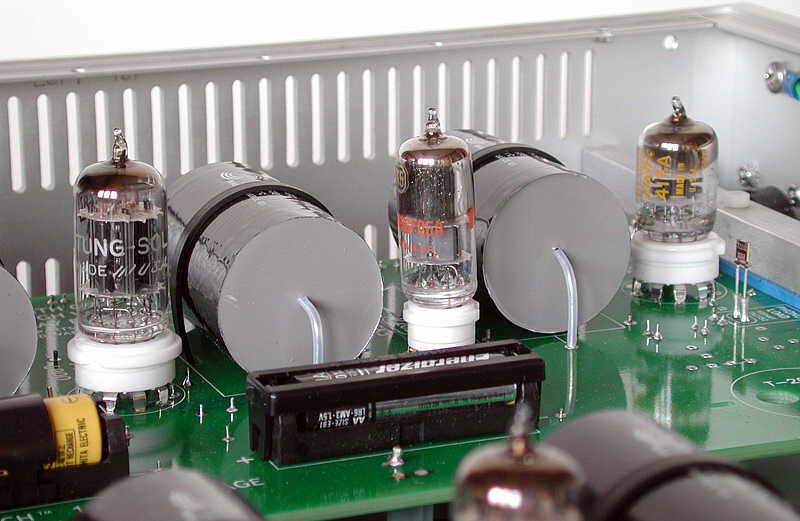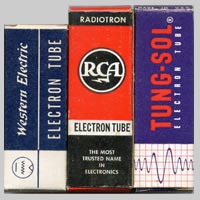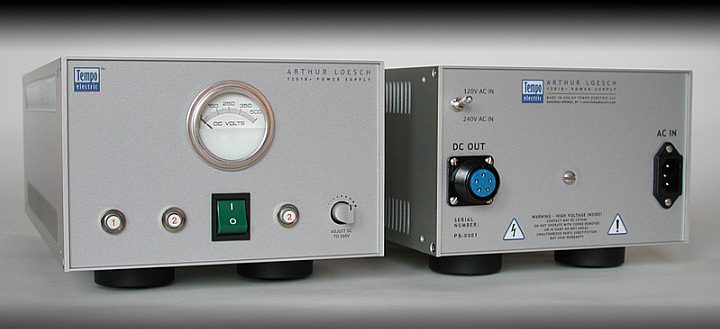
| |||||||||||||||||||||||||||||||||||||||||||||||||||||||||||||||||||||||||||||||||||
|
Considered by many to be classics of the high-end tube revival, for the past 20 years Arthur Loesch (pronounced "Lesh," like the Grateful Dead's Phil Lesh) Phono Preamplifiers were occasionally produced on a one-off basis by builders like J.C. Morrison, Herb Reichert, and John Baier. For a while, they were made by John Wiesner under the Loesch & Wiesner brand. For this ultimate edition, Dr. Loesch revisited the RIAA phono spec and recalculated all of the restoration points, regrouping them in a unique pattern to optimize their placement in the signal path. Using a wide range of passive parts, many of which were unavailable in earlier versions, the end result is a complete restatement of the Loesch circuit and represents the last word in phono reproduction.
 Read more about:
The Sound In voicing both the phono and line sections, unamplified music, recorded in a live environment, rather than in a studio, was used as the primary reference. The result is a natural, well-balanced sound, with nothing added or subtracted. If the details are on the disk (or disc) and the rest of the audio system is on a par, you will easily hear nuances that were previously hidden. These include those unique, low-level cues which distinguish individual recording spaces from one another. The lack of a sonic signature produces a sound that's notable for its natural bass, glare-free treble, and rich, detailed midrange. Add to these assets an uncanny degree of clarity, plus "air," and you can follow every individual instrument or voice with ease. When integrated with equipment of comparable quality, the audio system simply disappears, leaving you alone with the performers, themselves. Now the only question to ask is this — are they playing in your space or are you listening in theirs? The Circuit Amplifying the audio signal in three gain stages, the Phono circuit is suitable for any cartridge with an output of 0.25mV (or lower) to 2.5mV, moving coil or moving magnet. In some systems, lower output cartridges (less than 0.8mV) may benefit from the optional Nuvistor head amp. Left and right channels are built on a pair of identical boards, mounted side-by-side for true dual-mono operation. Cartridge loading is infinitely variable via fixed-value plug-in resistors, located on the PC Board next to the phono input.  Optional RCA sockets can be added on the back panel for listeners who prefer external plug-ins. An Active Line stage is included as a buffer to smooth out the edginess often associated with CDs. Aurally, this seems to fill in the gaps between the pits and helps to render the music as if it were eminating from an analog source, rather than a digital one. A pair of Passive Line inputs, which bypass the gain circuitry and go directly to the dual-mono volume controls, are available for high output sources, such as an FM tuner. When only using these inputs, the preamp's power supply can be turned off to save on tube life.
A new feature is the adjustable bias control. By changing the bias (plate voltage) of the first stage tube (5842/417A), listeners can tailor the sound to match their system in a range from High Bias (Warm), Medium Bias (Neutral), or Low Bias (Cool). Audio Circuit Signal Paths
Each stage is built with its own optimal blend of parts, many of which are normally considered to be upgrades. These include VCap Teflon® capacitors, "naked" Vishay Resistors, WBT NextGen RCA sockets, and extra soft temper, pure silver wire. Hand-selected and precisely matched low-noise NOS (new old stock) American and British tubes, culled from an extensive in-house inventory, are standard.  
Tubes in Bold Face are supplied. Those in Light Face can be substituted. The 1201B+ Power Supply Based on a design originally developed for military and laboratory test equipment, the 1201B+ Power Supply is a separate tube regulated unit that's been updated and optimized for high-end audio. User adjustable for 120V or 240V worldwide operation, it's housed in a chassis that's completely separate from the audio section in order to provide optimum shielding for low noise operation. An illuminated meter and 10-turn trimpot allow the user to precisely adjust the output voltage, while circuit breakers mounted on the front panel do away with fuses. The power supply is connected to the audio stage by a heavy duty umbilical which is available in lengths from 2 feet (0.6 meters) to 8 feet (2.4 meters). In addition, a second power supply can be added at any time for complete dual-mono operation. This has the advantage of increasing overall dynamics and bass response, especially in phono mode. An IEC inlet allows the use of an upgraded AC power cord on each supply.  Click here or on the photo for complete power supply information and specs.
All features, parts, and specifications are subject to change without notice.
Tempo Electric LLC PO Box 770 Saratoga Springs, NY 12866-0770 USA +01 (518) 542-7004 The best time to reach us by telephone is 10AM-7PM, US Eastern Time. If you reach our voicemail, please leave a message or send an eMail to Either way, we will try to reply within 24 hours. |

